All the Pretty Beaches
I was lucky; I grew up by the ocean. Surprisingly, or at least surprising to me, I never reached that point where I took it for granted. When something is right there for so long sometimes it blends into the background noise and you stop noticing it. Familiarity breeds contempt. Or at least complacency. But I’ve never felt complacent about my proximity to the sea. It’s the one thing I miss living in Athens. How could you not? It’s too big a thing to take for granted; it’s were we came from. And it remains the one of the last true boundaries between the known and the unknown.
Boundary lands are always the most interesting places — the seashore, the edge of timberline, where the city starts to give way to the country. These are the fringes of our world, the peripheral edges of our collective vision where everything is less certain, but more possible, more inviting. Boundaries are the gray areas where life feels most real, most truly momentary because the boundaries themselves are ever in flux.
The seashore is also just plain fun. Lounging in a hammock strung between two palm trees, sipping cocktails and enjoying the sunshine seems to be high on most people’s list of things they think they would do if they won the lottery.
I’ve spent a good bit of my time traveling either at or around the seashore, from Thailand to India, to Nicaragua and Indonesia. The ocean may well be the only constant there is when you’re traveling. I’ve been to plenty of places simply to see what the beaches were like — Goa, India; Nusa Lembongan, Indonesia; Little Corn Island, Nicaragua and plenty more I haven’t written about.
These days though I’m less inclined to travel somewhere solely for the promise of nice beaches because I found St. George Island.
We stumbled upon St. George Island a couple years ago. St. George is just off the Gulf Coast of northwest Florida, only about 7 hours from where I live (9 with babies). There are better places if you’re looking to dive or snorkel. Ditto if it’s nightlife you’re after. But if you’re looking for a seemingly endless amount of gorgeous white sand beaches you’ll share with only a few migratory birds, St. George is among the best boundary land in the world.
We first arrived here largely by accident. My wife and I tagged along on an invitation to share a cheap beach house someone else had rented. We came back a year later. And again six months after that. And we hope to be back for a fourth visit before the year is over.
St. George is more than just a nice beach though, it’s a little backwater in time. It’s a little slice of the world as it used to be, the world I grew up in, before the proliferation of mega-resorts and all-inclusive vacation package extravaganzas. St. George doesn’t offer anything like that. There’s little more to St. George than a store, a gas station and a couple of seafood trailers offering up fresh shrimp, snapper and scallops from nearby Apalachicola. There are some condos, but the two motels are rundown affairs that look like backwater holdouts from the early 1980s. There’s nothing about this place that even hints at the world of resorts and all-inclusive packages. And that’s the way I like it.
It’s entirely possible that by the time the mid-summer tourism peak rolls around at Independence Day St. George Island is unbearably crowded with north Florida rednecks, but, having only been here in the shoulder months of May, September and October, I have trouble picturing it. For the most part there’s rarely been another person on the beach, let alone a crowd, when we’re here. The surprising thing though is that by all rights it should be crowded, even in the off season, but it’s not.
St. George is long and narrow, some thirty miles from one end to the other, but rarely more than a half mile across. It’s part of a barrier island chain, along with Dog Island and St Vincent Island, that provide shelter from the Gulf seas and help create the Apalachicola Bay.
Roughly a third of the island, the entire western end, is closed off to a private, gated community. To karmically balance that the entire eastern half of the island is protected from development by the Dr. Julian Bruce St. George Island State Park. If we weren’t fortunate enough to know someone willing to rent us a beach house on the cheap, we’d be camping here. Even if you’re not camping the park is worth a visit. Hardly anyone seems to stray much beyond the beach parking lots so if you walk for a bit you’ll easily find miles of beach you’ll only have to share with a few plovers, sandpipers and the occasional Great Blue Heron standing atop the dunes behind you.
One day we rented a crappy bike and rode out through the state park to the very eastern tip of the island where a small channel of water separates St. George from the uninhabited Dog Island. Aside from a few fishermen clustered around the leeward side of the channel, there was no one around.
St. George was once little more than rolling sand dunes covered in sea oats and tall grasses. Dunes still occupy the central portion of the island, particularly here in the state park where the dunes have been spared development. On the windward side the dunes turn to beaches which look out on the Gulf of Mexico. St. George acts as a barrier island for Apalachicola Bay, but most of the time there’s little to protect against. The Gulf is typically about as calm of waters as you could hope for. Of course when the storms come, they really come. Hurricanes have been rearranging St George ever since it was created, even splitting it into two islands and then bringing it back together again. The fishermen ended up liking that extra entrance to the bay. What was originally the doing of a hurricane is now a properly dredged channel, though it’s certainly within a storm’s power to change that again.
I spent some time exploring the dunes along the east end, watching the herons standing tall and silent while Laughing Gulls cried in the air overhead. A pair of ospreys made lazy circles above the cluster of fishermen and pelicans occasionally dive bombed into the sea to pluck out an unlucky fish. After a while it got hot in the wind-sheltered, sun-baked sand dunes so I walked back to the shore for a swim before making the questionable decision to ride back along the beach. Florida sand is sugary fine stuff, not particularly supportive when you put a fair amount of weight on it. There were stretches where I could ride, but I ended up walking a good few miles as well, stopping for a swim whenever I got tired.
Back at the state park entrance I briefly detoured across the island to the leeward shore. The back side of the island is a totally different beast. Here the dunes give way to actual soil which supports a band of pine and palmetto forest that eventually opens up to wide, reed-filled tidal marshes. The marshlands are interspersed with what is locally known as hammocks — slightly raised bits of porous humus capable of sustaining of Live Oaks, Cedars and the occasional Cypress tree, small deciduous islands is a sea of reeds. The marshes overlook the oyster fields of the Apalachicola Bay and, on a clear day, the mainland of Florida two or three miles away. Apalachicola Bay is so shallow it’s tempting to think you could walk back to the mainland, though I’ve no idea why you would want to do that.
There’s not much to St. George, but it’s all I need. Were it not for the need to earn the bio-survival tickets necessary for obtaining food and shelter in this country I would rarely leave this place. A house with a view of the water, perhaps a boat for fishing and getting around the bay, and, to my mind anyway, you’d be well set for life. In the mean time, I’ll take what I can get of St. George.


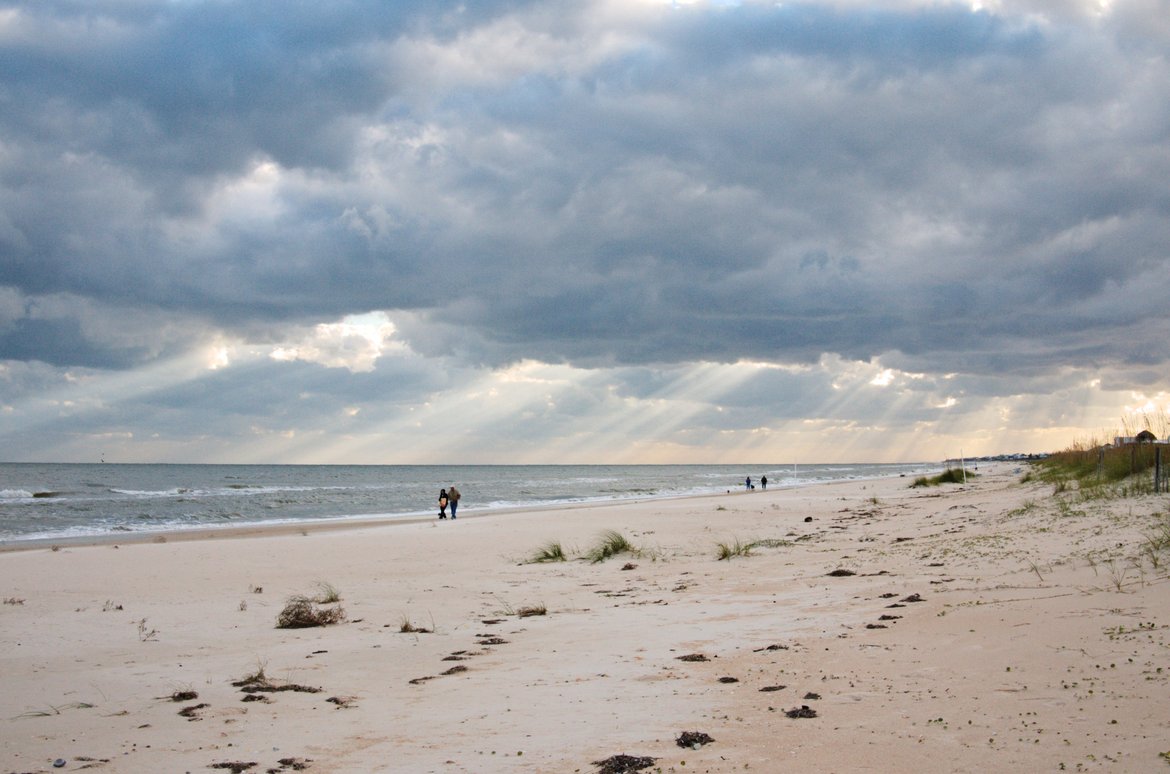
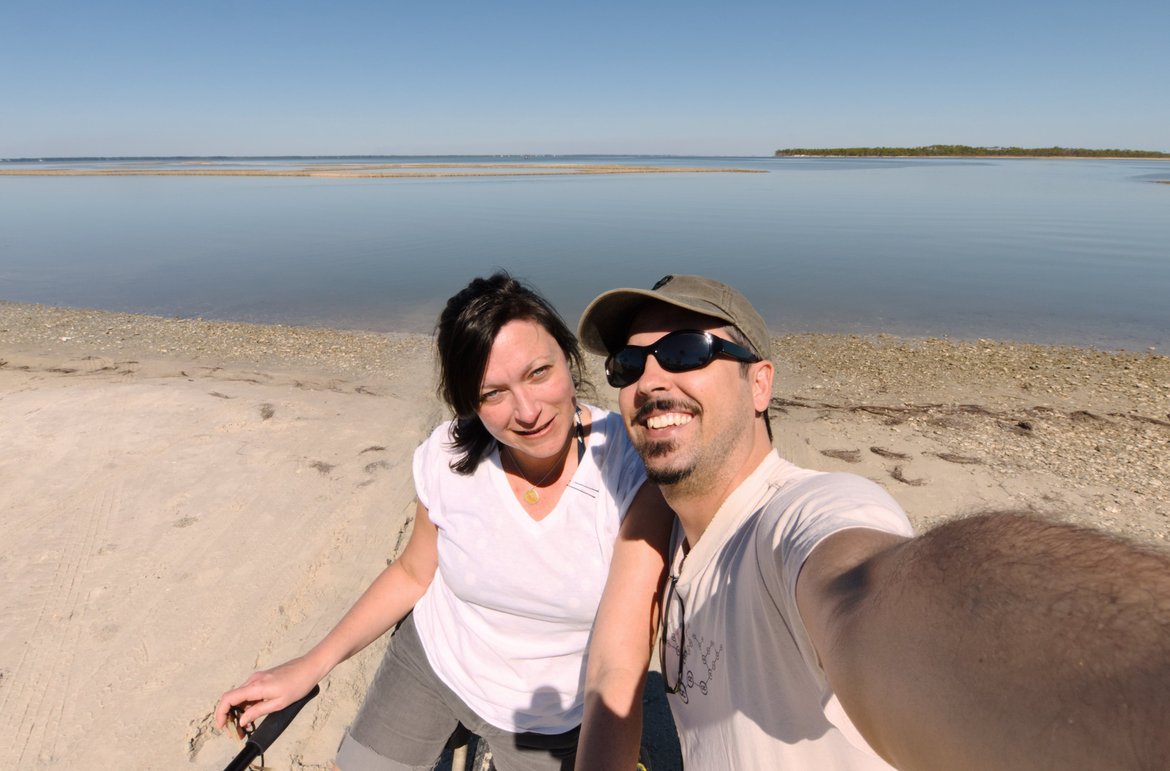
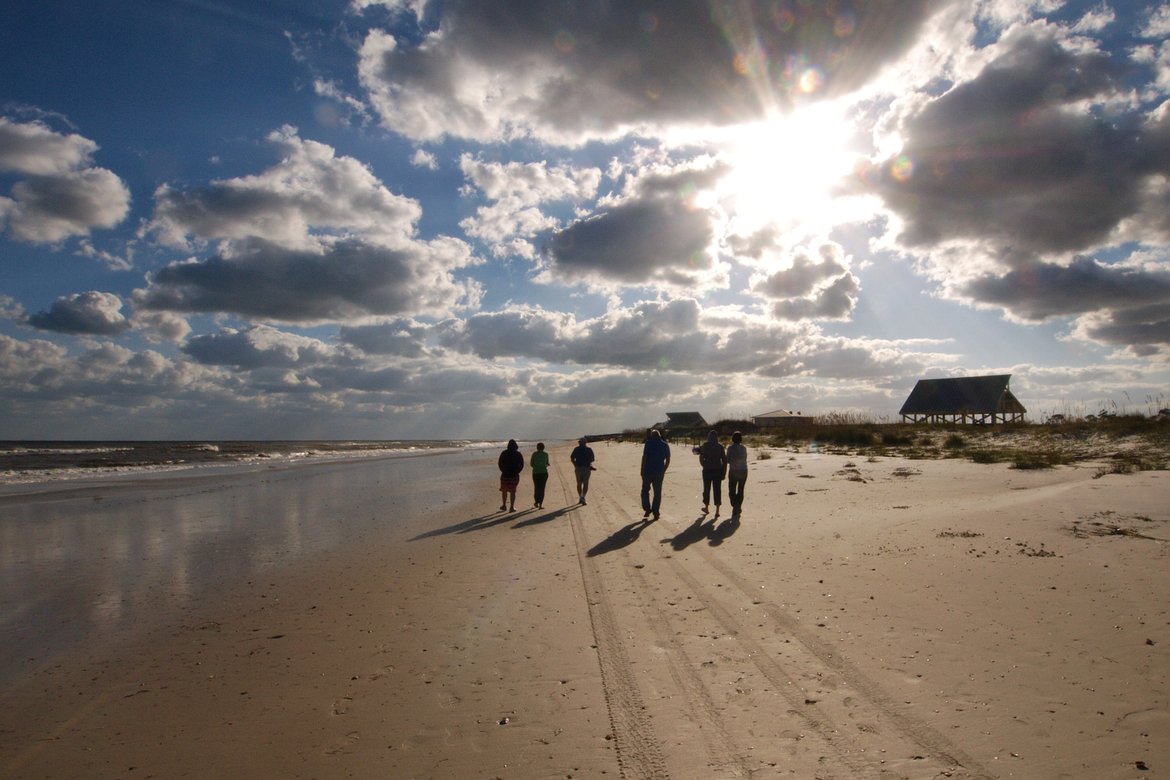
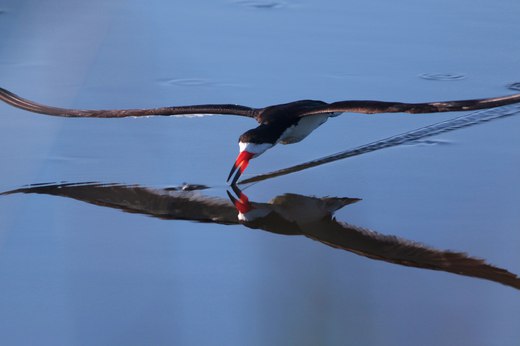
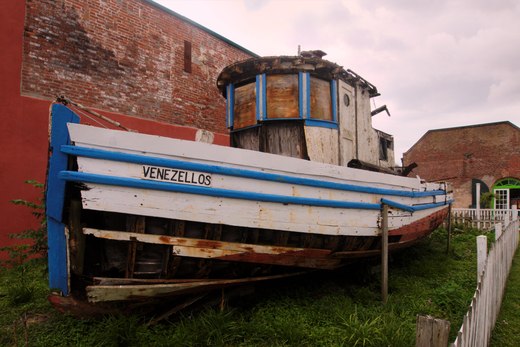
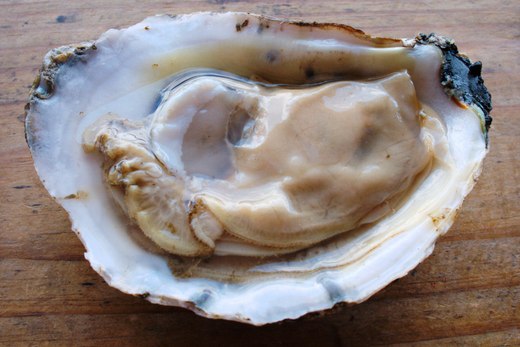
Thoughts?
Please leave a reply:
All comments are moderated, so you won’t see it right away. And please remember Kurt Vonnegut's rule: “god damn it, you’ve got to be kind.” You can use Markdown or HTML to format your comments. The allowed tags are
<b>, <i>, <em>, <strong>, <a>. To create a new paragraph hit return twice.